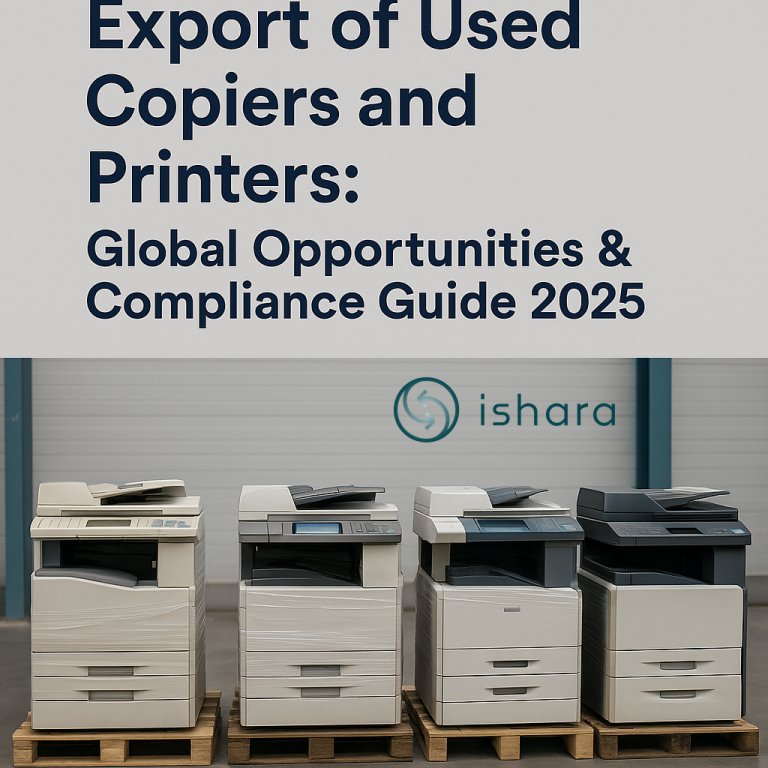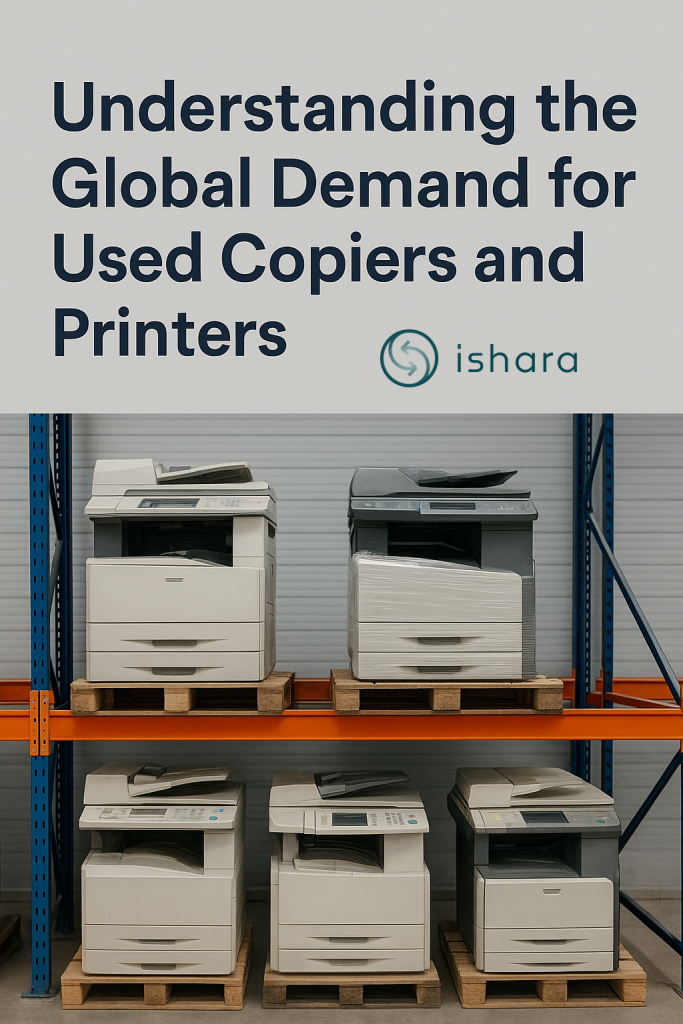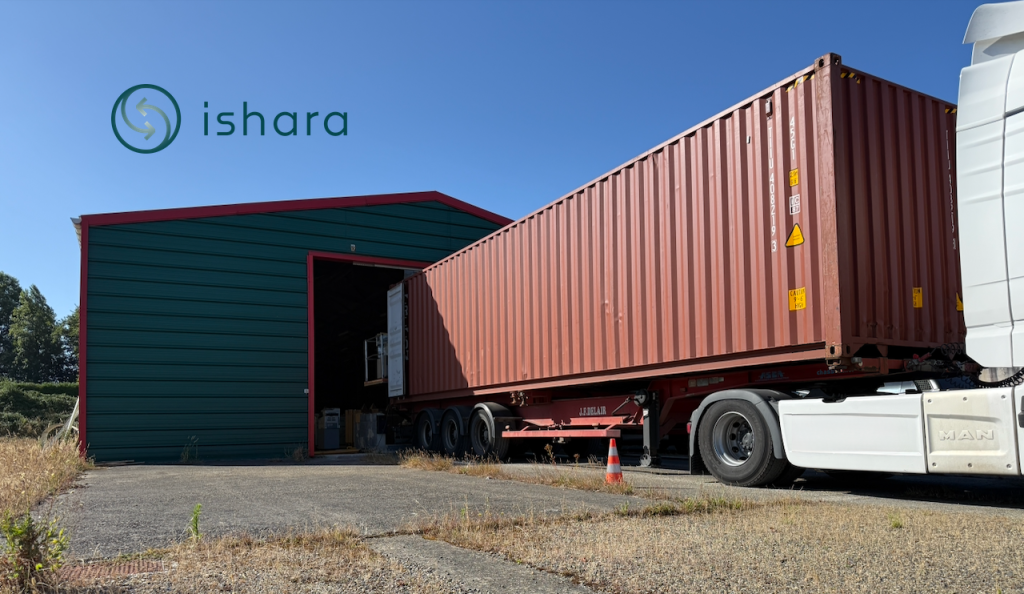In a rapidly digitizing world, the demand for affordable and sustainable office solutions is higher than ever. One growing sector within this demand is the export of used copiers and printers. Businesses, especially in developing countries, are increasingly seeking refurbished or pre-owned office equipment as a cost-effective and eco-conscious alternative. This shift presents a lucrative opportunity for exporters—if they understand the market dynamics, legalities, and best practices.

This guide explores everything you need to know about this niche but impactful industry, from identifying top import regions and legal hurdles to handling logistics and maximizing profits.
Understanding the Global Demand for Used Copiers and Printers
What Drives the International Market?
The global appetite for used office equipment stems from multiple factors:
-
- Cost Efficiency: New printers and copiers come at a premium, making used devices more attractive to budget-conscious buyers.
-
- Growing Entrepreneurship in Developing Countries: As small and medium businesses expand globally, many rely on affordable second-hand tech.
-
- Focus on Sustainability: Governments and businesses worldwide are shifting towards greener procurement practices, including buying refurbished equipment.
Key Regions with High Import Demand
Several countries and regions show consistent demand:
-
- Africa: Nations like Nigeria, Ghana, and Kenya seek budget-friendly options for growing businesses and government sectors.
-
- South Asia: India, Bangladesh, and Pakistan have burgeoning markets for used tech.
-
- Eastern Europe & Latin America: Countries in these regions often import used equipment to save on infrastructure costs.
Why Export Used Office Equipment?
Environmental and Economic Benefits
Exporting used equipment supports circular economy goals by reducing electronic waste (e-waste) and promoting the reuse of electronics. This lowers manufacturing emissions and preserves raw materials.
Extending Lifecycle & Reducing E-Waste
Used copiers and printers, when refurbished, can operate efficiently for several years. Exporting helps extend their lifecycle, aligning with the global push for greener, low-carbon business models.

Key Players in the Export Market
Leading Exporting Countries
United States
European Union:
- France
- Germany
- The Netherlands
- Italy
- Japan
These nations often upgrade to newer tech rapidly, making them rich sources of used office equipment.
Top Importing Countries
Eastern Europe,
Africa:
-
- Egypt,
- Nigeria,
- Cameroon,
- Morocco,
- Senegal,
- Kenya,
- Cote d’Ivoire
- South Africa
Middle-East:
-
- UAE,
- Bahrein,
- Iraq,
- Iran,
Asia:
-
- India,
- Sri-Lanka,
- Pakistan,
- China,
- Indonesia,
- Cambodia.
These countries maintain strong demand due to cost constraints and expanding SME sectors.
Types of Copiers and Printers in High Demand
Laser vs Inkjet: Which is More Popular?
Laser printers, known for speed and cost-efficiency, are in higher demand than inkjets, especially in corporate and institutional settings.
Multifunction Devices (MFPs)
These devices that combine printing, scanning, copying, and faxing are especially popular due to their versatility, making them top sellers in international markets.
Preparing Equipment for Export
Testing, Refurbishment, and Packaging
Before export, ensure:
Functional tests and repairs are completed
Clean and secure packaging is used to prevent damage during transit
Compliance with International Quality Standards
Compliance with standards like ISO 14001 for environmental management helps build buyer confidence and meet import regulations.
Legal and Environmental Regulations
Export Laws and Licensing
-
- Check country-specific e-waste shipment laws, as non-compliance can lead to hefty penalties.
Environmental Compliance and E-Waste Policies
All exporters must follow the Basel Convention guidelines, which regulate the transboundary movement of hazardous waste, including used electronics. In France, this is enforced via 2 governments lead agencies, Ecologic and Ecosystem. These two bodies ensure that Electronic and Electric waste does not end up in landfills and is properly processed. Ecologic through its website e-dechets enforces the obligation for exporters to have all its waste registered and disposed of in accordance with European Laws. Ishara for instance, regularly ask Ecologic to collect its WEEE waste from Electronic and electric equipement (free of charge) and holds a record of all WEEE collection ensuring that no e-waste is exported.

Best Practices for Exporting Used Office Equipment
Partnering with Reputable Distributors
Given the pitfalls of global export and the financial risk linked with international import/export, its is paramount to establish trust between importers and exporters:
-
Working with certified resellers
-
Verifying end-user intentions
- Providing warranties or service contracts
- Choosing the correct INCOTERM
- Seeking help from banks and financial institutions to cover payments
Ishara is a reputable distributors based in France with several years of experience in the business and access to several trustworthy supply sources.
Ensuring Secure and Ethical Disposal of Waste
Dispose of non-working units or unusable parts ethically, ensuring no illegal dumping or unsafe recycling occurs in destination countries.
Technology Trends Impacting the Export Market
Rise of Digital and Wireless Printing
Buyers are increasingly requesting Wi-Fi-enabled or cloud-connected devices. Keep stock modern and compatible with current tech trends.
Impact of Remote Work on Equipment Demand
Remote and hybrid work has increased demand for personal-use printers and compact multifunction devices.
Sustainability and the Circular Economy
Contribution to Global Recycling Goals
Exporting and reusing used equipment helps meet global targets for reduced waste and carbon footprints.
Corporate Social Responsibility in Export Trade
Ethical exporters ensure transparency, traceability, and fair labor practices throughout the supply chain.
FAQs About Export of Used Copiers and Printers
1. Is exporting used printers legal?
Yes, but compliance with international and local regulations is essential, especially for e-waste and hazardous materials.
2. Do used copiers require refurbishment before export?
While not mandatory, refurbishment improves reliability, value, and customer trust.
3. What documents are needed to export copiers internationally?
You’ll typically need a commercial invoice, packing list, certificate of origin, bill of lading, and possibly an export license.
4. Are there countries that ban used printer imports?
Some do restrict imports to reduce e-waste. Always verify destination country policies.
5. How should I price my used equipment for export?
Base it on age, brand, model, condition, and local market conditions in the importing country.
6. Can exporting used copiers be profitable?
Yes, especially when combining competitive pricing, quality assurance, and value-added services.
Conclusion
The export of used copiers and printers is more than just a resale business—it’s a sustainable, profitable, and globally impactful trade. With the right preparation, legal awareness, and market research, exporters can tap into a growing global demand while supporting environmental responsibility and technological access for all.
